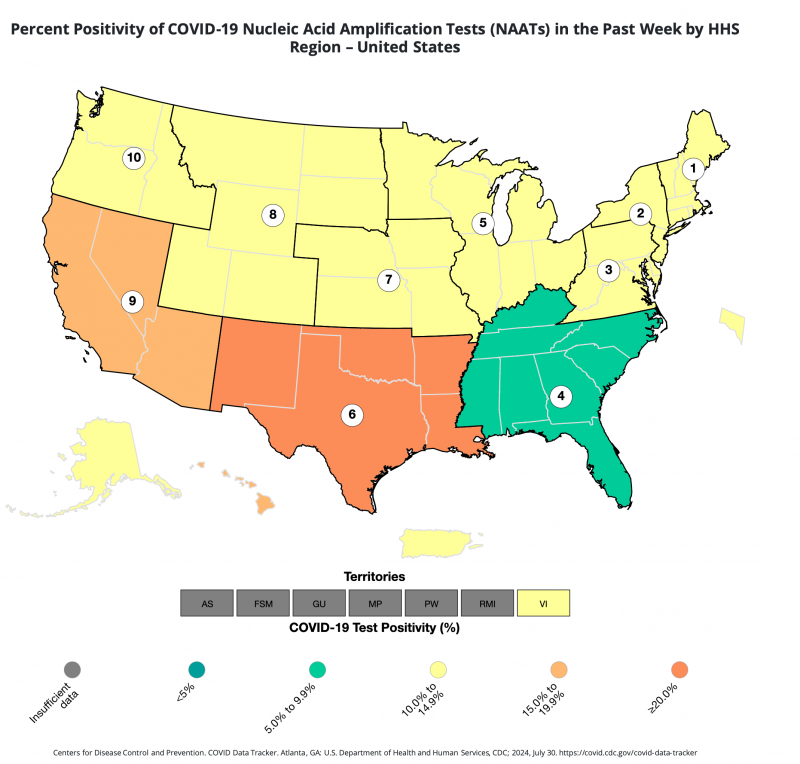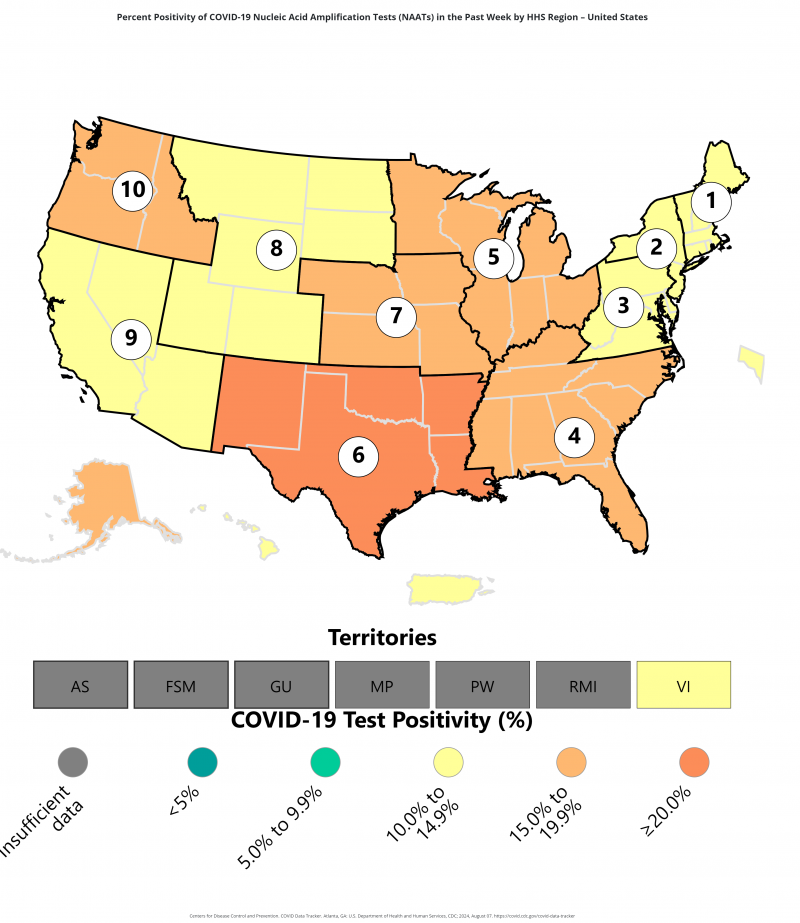As COVID-19 cases continue to rise across the U.S., driven largely by the emergence of a new dominant strain, the U.S. Centers for Disease Control and Prevention (CDC) have released an updated map highlighting which states have been the hardest hit.
The data reveals that five Southern/Southwestern states have the highest rates of infection, with more than 1 in 4 COVID tests coming out positive across Arkansas, Louisiana, New Mexico, Oklahoma and Texas.
Since early April, a group of highly infectious spinoffs of the Omicron variant have risen to prominence across the U.S. Nicknamed the "FLiRT" subvariants due to the positions of the specific mutations in their spike proteins, this new class of viruses now accounts for roughly 75 percent of infections in the U.S., according to the CDC.
More From Newsweek Vault: What Is a Health Savings Account?
For the week ending July 27, the CDC reported that 16.3 percent of all COVID tests performed in the U.S.—excluding at-home test results—were coming back positive, representing a 2 percent increase from the previous week. However, these positive results were not evenly distributed across the country.
The below map illustrates the distribution of positive tests across the U.S., divided into ten Health and Human Service regions.
Coming in at number one with the highest percentage of positive tests was region six, which encompasses Arkansas, Louisiana, New Mexico, Oklahoma and Texas.
More From Newsweek Vault: Compare the Top Health Savings Account (HSA) Providers
Region seven, which includes Iowa, Kansas, Missouri and Nebraska, reported the second highest percentage of positive tests at 17.8 percent, with region four—covering Alabama, Florida, Georgia, Kentucky, Mississippi, North and South Carolina, and Tennessee—coming in close behind at 17.5 percent.
Region four, which saw the lowest infection rates in the U.S. for the week ending July 20, also saw the most significant rise in positive tests from the previous seven days, with a 7.2 percent increase in positive tests.
The lowest infection rates for the week ending July 27 were seen in region three, covering Delaware, District of Columbia, Maryland, Pennsylvania, Virginia and West Virginia, at 11.1 percent positive tests, which is a small 0.3 percent decrease from the previous week.
Drag slider compare photos


The overall rise in infections has followed a surge in COVID-19 detection in wastewater surveys across the U.S., with "very high" levels detected in 20 states, according to the CDC.
However, while the CDC has reported a steady increase in infections across the U.S. in recent weeks, hospitalizations remain relatively low. From what we have seen so far, the new FLiRT variants, while more infectious, do not generally cause severe symptoms. Still, it is important to isolate yourself from others if you begin to develop symptoms.
Is there a health issue that's worrying you? Let us know via health@newsweek.com. We can ask experts for advice, and your story could be featured on Newsweek.
Disclaimer: The copyright of this article belongs to the original author. Reposting this article is solely for the purpose of information dissemination and does not constitute any investment advice. If there is any infringement, please contact us immediately. We will make corrections or deletions as necessary. Thank you.




